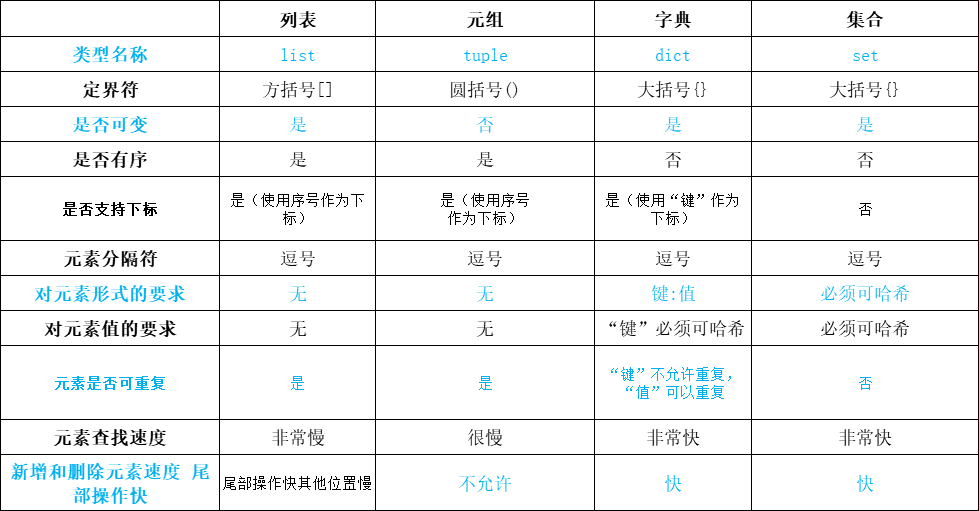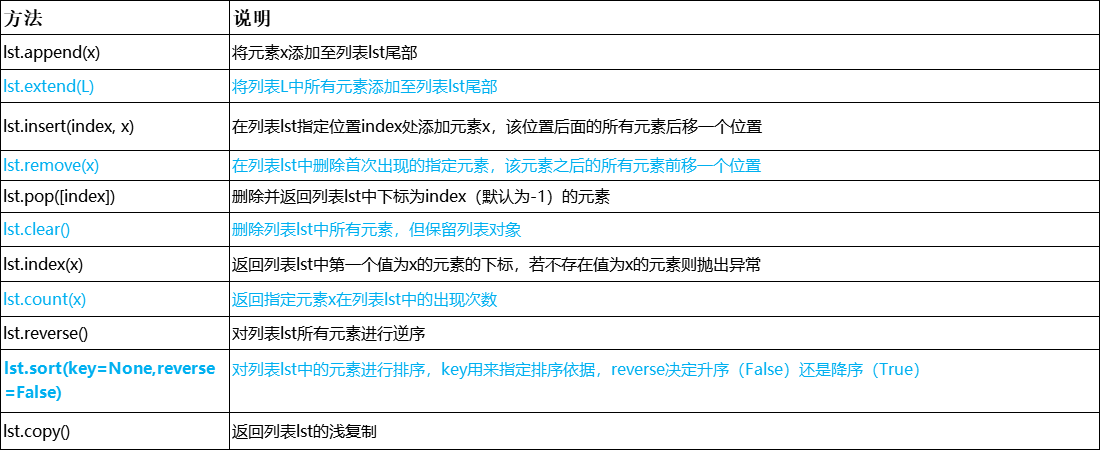
Python序列:
1,python序列支持双向索引:

2,序列分类比较:字典和集合的地址是用哈希计算的


注意:元组中可以包含可变的序列,可以修改元组中可变序列中的值。可以作为字典的键。
3,序列常用方法:

例如:
x=[1,2,3,8,5]
print("定义列表x为:{}".format(x))
x.append(6)
y=[7,8,9]
print("在列表x的尾部添加元素6后x为:{}".format(x))
x.extend(y)
print("将列表y拼接在x的尾部后x为:{}".format(x))
x.insert(1,1.5)
print("在列表x的第1个位置插入元素1.5后x为{}".format(x))
x.remove(7)
print("移出列表x中值为7的元素后x为{}".format(x))
y=x.pop(1)
print("弹出列表x中第1个元素为:{}
x为:{}".format(z,x))
num=x.index(8)
num_times=x.count(8)
print("列表x中值为8的元素第一次是在列表的第{}个,一共出现了{}次".format(num,num_times))
x.reverse()
print("列表x逆序输出:{}".format(x))
x.sort(key=None, reverse=False) #reverse决定升序(False)还是降序(True)
print("列表x升序输出:{}".format(x))
y=x.copy()
print("列表x复制为y:{}".format(y))
注意:
1,del 列表名或列表中某个值
2,值存储:
x=[1,2,3]*3
x
x=[[1, 2, 3], [1, 2, 3], [1, 2, 3]]
x[0][0]=0
x
x=[[1,2,3]]*3
x
x[0][0]=0
x
